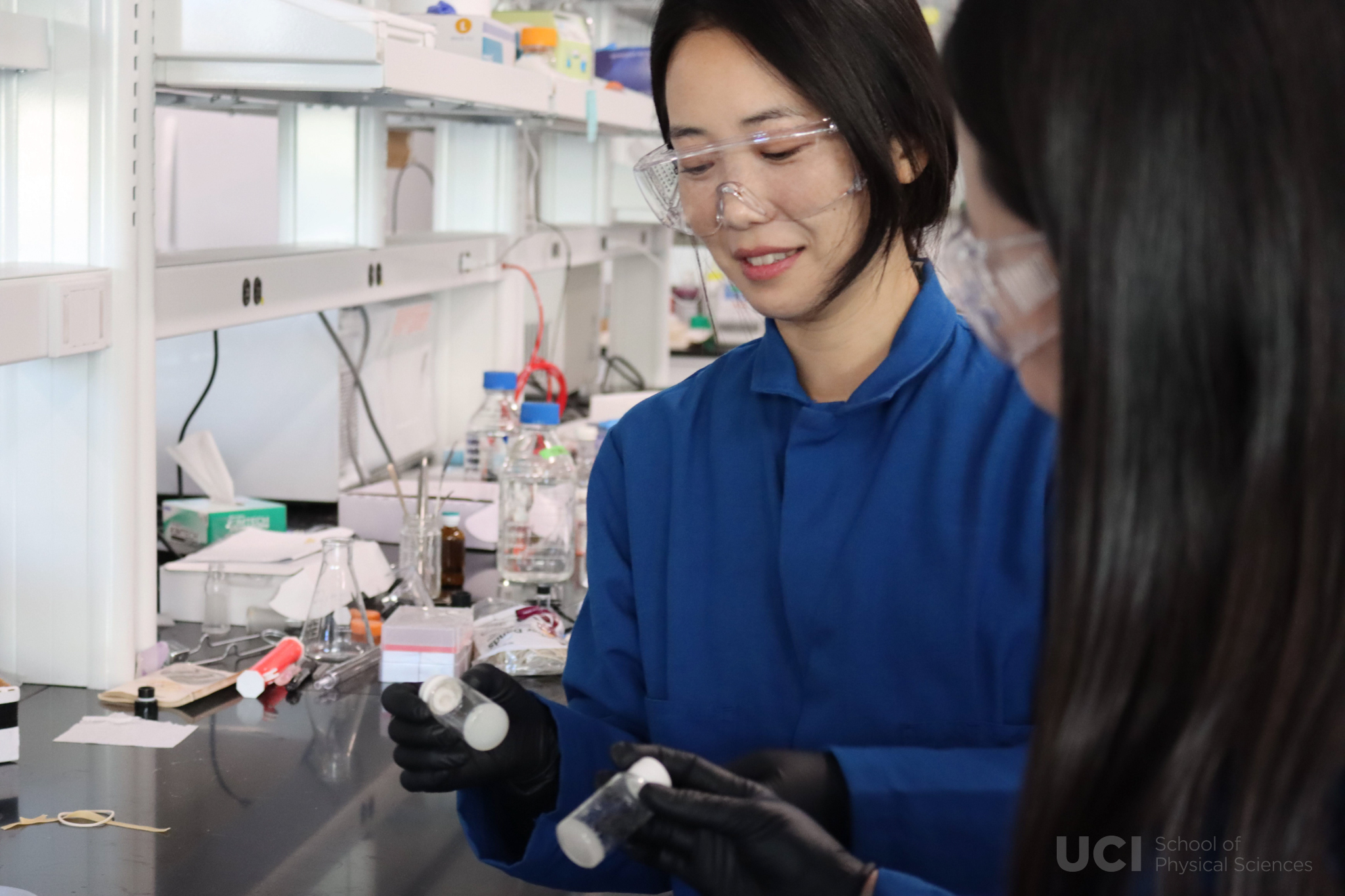UCI scientists synthesize material that could lead to next-gen medical implants

Professor Seu Sim of the UC Irvine Department of Chemistry works to develop materials that could redefine how certain patients receive care.
Chemists have longed to create materials in labs that mimic the chemical processes happening in our bones and tissues. Now, researchers at the University of California, Irvine are reporting the discovery of the first material, one made by living cells, that can do just that.
The material could pave the way for the development of medical devices like pumps and implants that can morph and respond to chemical changes in the body, including fluctuations in hormone levels.
The discovery, published in the Journal of American Chemical Society, details how bacteria that naturally grow on our skin can, when combined with synthetic polymers, create living materials that can increase the compatibility of medical devices with the patients who need them.
Inspired by how the human body uses carbohydrates as fuel to grow and repair itself, “I thought that there should also be a living, synthetic self-morphing material created using the same fuel,” said Seu Sim, a professor in the UC Irvine Department of Chemistry who led the study.
In the new dynamic material, the presence of carbohydrates feeds samples of skin bacteria and helps the bacteria trigger the process that boosts their compatibility.
“Skin bacteria are of key interest in this study. They are exceptionally resilient against various chemical environments and continuously consume sugar for metabolism,” which is crucial for ensuring compatible implant-body chemistries, said Sim. “We combined the bacterial cells with polymers that react with sugars, and this combination created a cycle where sugar is used to break down the polymers into clusters followed by the reassembly of itself once the bacterial cells consume the sugar.”
The material, in effect, is reconfiguring itself in the presence of the sugar – something it might do in the future in the presence of chemicals in the human body, including hormones like insulin, the fluctuations of which are a key aspect of diseases like diabetes.
Sim’s lab is the first to create such a material, and her team, Sim explained, had to think outside the box to make the finding. “There are no rules, so you just have to be creative,” she said. “This creativity while working at the interface of microbiology and material science was key to the research.”
Sim added that the discovery is a “seed,” one that opens the door for her and other labs to see how the process they found might one day replace current medical devices through the bioprinting of devices that grow and customize themselves to a patient.
Right now, the self-morphing process the team created is only happening on the molecular level with small cells and polymers. For the “seed to become a tree,” Sim said, “we need to expand our scope to include various cell types and polymers, and increase scalability” to the medical device level.
Sim and her team are a part of the UC Irvine Center for Complex and Active Materials, a National Science Foundation Materials Research Science and Engineering Center Program with the mission to create new materials to meet critical biotechnology demands.
